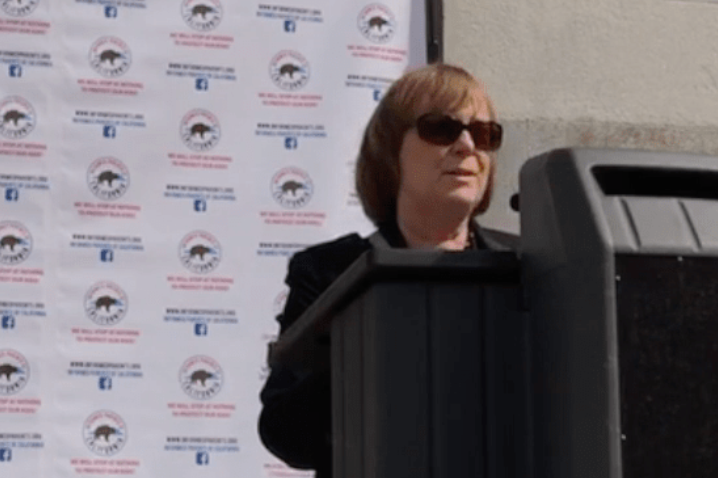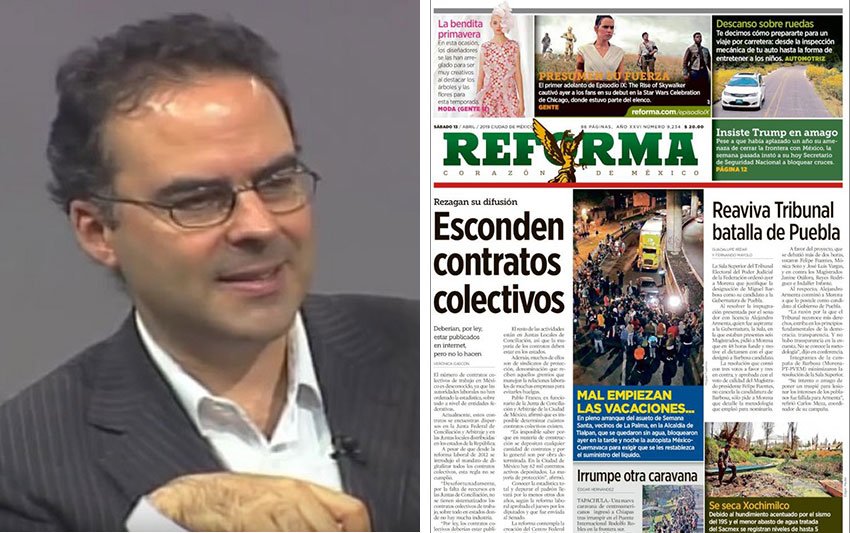SFO is soliciting proporsals for two food and Beverages Kiosk Leases, Small Business Enterprise Set-Asides. Visit flysfo.com/kiosklease for details.
NOTICE INVITING BIDS
The Peralta Community College District is calling for sealed bids for the Laney College Door Replacement Project (Bid No. 18-19/29) to be delivered to the Purchasing Department, at 501 5th Avenue, Oakland, California, 94606, until 2:00 pm, on June 5th 2019.
SB 854 requires any contractor or subcontractor bidding on a public works project to register with the Department of Industrial Relations (“DIR). This is a Public Works project and will require payment of prevailing wages. In order to perform the work, Bidders at the time of the Bid Opening and for the duration of the project shall possess a valid California Contractor’s license and certifications in order to qualify to perform the Work: Class B1 or C28 Contractors License.
The project consists of repairing and replacing doors throughout the campus. This includes but is not limited to the installment, adjustments, repairs or replacement of Metal, Storefront, Automatic Doors and all associated hardware. All work shall meet ADA compliance, CBC Title 24, ADAAG as well as California Code of Regulations, Title 8, Section 3235.
A mandatory bidders’ conference will be held on May 21, 2019 at 11:00 a.m. in the Conference Room #1 at the Department of General Services at 333 East 8th Street, Oakland, CA 94606 (510)466-7346.
All bids shall be presented in accordance with the bid specifications for this project. Bid documents and specifications will be available by May 6, 2019 at the Bay Area Builders Exchange or by visiting our website at www.peralta.edu and under “Quick Links”, click “Business Opportunities” to download the bid packet
CITY OF REDWOOD CITY NOTICE OF PUBLIC HEARING
Establishment of City Council Districts for By-District Elections
NOTICE IS HEREBY GIVEN that on May 6, 2019, the City Council of the City of Redwood City, California, will hold a Public Hearing at 7pm in the City Council chambers located at 1017 Middlefield Road, Redwood City. The topic of this hearing will be the composition of City Council Electoral Districts.
NOTICE IS HEREBY FURTHER GIVEN that at the public hearing, the public is invited to provide input regarding the content of the draft map or maps and the proposed sequence of elections. After the public hearing on May 6, 2019, the City Council will consider introduction of an ordinance implementing district-based elections for seats on the City Council. Comments can also be submitted via email to districtelections@redwoodcity.org, or hand-delivered or mailed to City Hall. More information about the establishment of single-member districts for the by-district elections can be found at www.redwoodcity.org/districtelections. In the event changes are necessary to the public hearing noted above, a new notice will be published in accordance with the law.
DATED: April 15, 2019
BY: Pamela Aguilar, City Clerk
PUBLISHED: April 26, 2019
Define ‘American Artist Fellowship Program’ launch
Compiled by the El Reportero’s staff
Define American is bringing eight undocumented artists to Oakland next week to launch the first-ever Undocumented Artist Fellowship program. The fellowship connects these artists with resources, a stipend, and national exposure through Define American, while also demonstrating that art is a universal language. We are fighting to ensure that the thriving arts scene in the U.S. is fully imbued with energy from all over the world. The artists come from six cities in five states, including two from California. They are painters, sculptors, musicians, designers, photographers, performance artists, and experimental filmmakers.
Please join us as we unveil our cohort of fellows and invite attendees to meet the artists in attendance.
On Saturday, May 4, 2019, 5-6:30 p.m., at Pro Arts Gallery & COMMONS, 150 Frank H. Ogawa Plaza, Oakland.
Docu-theater production celebrates Afro-Cuban immigrants and Cuban-Americans
This new and timely docu-theater production celebrates Afro-Cuban immigrants and Cuban-Americans who have accomplished a high level of excellence in the United States, Cuba, and abroad through hard work and iré, the Lucumí condition of being blessed with positive energy.
Performed in English and Spanish, We Have Iré tells the true life stories of four Cuban artists—Youth Speaks cofounder Paul S. Flores; DJ Leydis, the first Afro-Cuban female DJ to play at the White House; award-winning dancer and choreographer Ramón Ramos Alayo; Grammy-nominated artist Yosvany Terry—while giving them the space to tell their stories on their own terms through dance, music, and spoken word.
On Friday and Saturday, May 10–11, 2019, at 7:30 p.m.; Sunday, May 12, 2019, at 2 p.m.
YBCA Forum, 701 Mission Street, San Francisco.
Teatro Nahual presents “The First Lady” (Spanish)
The First Lady written by the Mexican playwright Willebaldo López is a farce that reflects the absurd reality of the politics that surrounds us worldwide. This work, in a grotesque way and at the same time very close to reality, shows the scope of corruption in which the political layers and the type of ambitious individuals that make up the political posts move. The public, through laughter, can see reflected the reality of the town. Likewise, the eccentric personality of a political leader and the opulence and ambition of his first lady are caricatured, who try to reform the laws for their own convenience, regardless of the welfare of the people.
The work has the performances of Juan Aquino, Lucía Peralta, Geraldo Cadenas, Marco Morales, Brenda Gutiérrez and Carolina López.
The original music is by the masters Gerardo Fernández and Isidro Jiménez. The set design is by Bridget Wylie. The stage direction is in charge of Verónica Meza.
“The First Lady” will premiere on Friday, May 24 at 8 p.m., followed by more performances on Saturdays, May 25, Sunday, May 26, at matinee at 2 p.m .; Friday, May 31 and Saturday, 1st. of June.
Place: MACLA-510 S. First Street in San Jose, CA.
Tickets are on sale at the Teatro Nahual site: www.teatronahual.org. You can also buy them at the theater door or book your tickets at: (650) 793-0783.
FLO, The Funky Latin Orchestra
The band FLO led by Mio Flores, El Timbalero, consists of a collection of musicians based out of the San Francisco and greater East Bay Area. Each with 30 years and plus of professional entertaining, performing, recording and touring with many greats of the music industry.
This group of well seasoned musicians have been playing together and entertaining audiences of many diverse social backgrounds and genres of music and have crossed paths with each other anywhere from the last five to 25 years in their careers. “FLO” Funky Latin Orchestra is pleased to be at Club Fox with all of you on this great night.
Azul Latino is led by Ernie Nolasco who is a self-taught lead guitarist with over 30 years of experience in the local Bay Area Music Scene. Growing up in the Mission District of San Francisco, Ernie was immersed in the eclectic blend of musical scenes that traversed the Bay Area through the 70s and 80s. Drawing influences from Ernie Isley, Neil Schon, Jimi Hendrix, and Carlos Santana. Ernie is a product of the Guitar’s Golden Age; when artists used the guitar to organically emulate emotion.
(www.azullatino.com).
On Saturday, June 1, at Club Fox, 2209 Broadway, Redwood City. Doors open 7 p.m.
Show 8 p.m.. Advance: $20/ Door: $25. For More Information, call 415-285-7719 or write DrBGMalo@aol.com.
Mexican artist Sofía Reyes will perform at the Platino Award ceremony
by the El Reportero’s news services
Sofia Reyes will be performing at the 2019 Platino Awards on May 12.
The Mexican star is one of the hottest artists right now, storming the charts with her track “1, 2, 3”, which has been at the top of the Billboard chart and whose music video has so far had 500 million views on YouTube. A global success which has gone platinum in half a dozen countries, including the US.
Having just turned 23, Sofia Reyes is a successful singer and composer. The Latina star has already garnered numerous nominations and prizes such as the Latin American Music Awards, MTV EMA, MTV MIAW and the Latin Grammys. Other recognitions include two Mexico Kids Choice Awards and other nominations for prestigious international prizes.
Just a few short years have passed since Sofia moved from Monterrey to L.A. with her independent label, Bakab, to launch her career as a solo artist. At the time, she was sharing her original music and covers on YouTube, until she signed a joint venture with Warner Music Latina.
Her sensational career has proven unstoppable. Her first single, “Muévelo”, with help of the rapper Wisinwent went straight to the Top 20 Latin Pop Songs on Billboard, where it stayed for 5 months. It was also the only Mexican artist to enter the Spotify Global 200, in which are the world’s most listened-to tracks appear.
Ozuna reigns at the 2019 Billboard Latin Music Awards on Telemundo
Nicky Jam and Bad Bunny follow on the list of top winners
The most prestigious night in Latin music was broadcast live on Telemundo on Thursday, showcasing an electrifying display of musical performances featuring some of the biggest Latin music stars, many world premieres, television debuts and surprise collaborations by top music acts.
The evening began under the Las Vegas sun at Mandalay Bay Events Center, where music, film and TV stars graced the red carpet with stunning beauty and glamour. Ozuna reigned during the night and topped the winners list with a record-breaking eleven (11) awards followed by Nicky Jam (5) and Bad Bunny (4).
Ex argentinean president presents book on country’s recent history
Argentine President Cristina Fernandez surprised today on social networks with the cover of a book in which, without hindrance, she makes a retrospective reflection to unravel some facts of the recent history of her country.
Sincerely is the volume’s title, which will be available in bookstores on April 26 and will be presented at the 45th fair in Buenos Aires on May 9.
As she says, the text ‘is not autobiographical nor is it an enumeration of personal or political achievements, it is a look and a retrospective reflection to unravel some facts and chapters of recent history and how they have impacted the lives of Argentineans and mine as well’.
Unexpectedly, Cristina presents an intimate journey through circumstances and moments of her life, of the country and the years of the most discussed and celebrated government of the recent Argentine democracy, points out the website www.megustaleer.com.ar, which advances some sentences of the book.
In about 600 pages, the current senator for Unidad Ciudadana describes from ‘the day after leaving the Presidency (on December 2015) to the complex political, economic and social decision-making for 12 years that changed the lives of millions of Argentineans.’
Issues such as the death of prosecutor Alberto Nisman, the misunderstanding that kept her husband (former President Néstor Kirchner) and Jorge Bergoglio (Pope Francisco) away, to the eloquent details that reveal the origin of today’s famous letter from San Martín to O ‘Higgins confiscated by Judge Claudio Bonadio, who has several cases open against the expresident, are revealed in this volume.
California Mom fighting for Sex Ed transparency succeeds in getting her bill to Senate hearing
by Greg Burt
A sex-ed transparency bill, authored by Senator Mike Morrell, is heading to the Senate Educa-tion Committee next week, yet its real author is first-time, citizen legislator Denise Pursche. This bay-area mother of three never intended to write a bill when she asked Mt. Diablo Unified School District for the sexuality lessons her elementary school planned to teach her twin 5th graders. But she got frustrated when school administrators would only send her lesson titles and vague curriculum summaries. That wasn’t good enough for Denise. She wanted to see the actual lessons and worksheets to be used in the classroom.
After a month of asking, being sent on detours, and then asking again and again, Denise finally got what she wanted. Once she saw the graphic, age inappropriate content, Denise realized why school personnel tried to hide the curriculum from her. For example, one 5th grade lesson in the Rights, Respect, and Responsibility curriculum by Advocates for Youth titled, “Sexual and Reproductive Anatomy,” have boy and girls, sitting side by side, review a worksheet illustration of a woman’s genitals with her legs spread open. Children color and label each part of the woman’s sexual anatomy as the teacher describes each in detail, including which ones are “very sensitive.”
Denise was appalled, not only at the curriculum’s age inappropriateness, but how she was treated by the school administration. One district employee told her it wasn’t necessary for parents to review the curriculum, even though the law allows it. “We know better than parents what kids are exposed to on social media, in movies, and television programs,” Denise remembered being told by one particular school employee. “Kids are also exposed to more pornography today than ever before. … We understand what students need to know. Parents believe their students are innocent, but we know that students are having sex at earlier and earlier ages.”
Last summer, Denise was invited to attend district meetings along with teachers and principals from other elementary schools in her district. During these meetings teachers said they didn’t think it was a good idea for parents to review the sex education lesson plans because “if parents reviewed the actual lesson plans, they would opt their children out of the lessons.”
“You see, district staffers believe that they know better than parents!” Denise said. “They be-lieve they are the arbiter of what students need to know about sex. They are no longer teaching reproduction, or how a human life begins, but are teaching sexual behavior and sexual pleasure.”
Denise decided to opt her own children out of the sex education lessons, but Denise realized most parents still had no idea what their children were being taught. She couldn’t let it go. There needs to be a change in the law, she thought, so this curriculum is easy for parents to preview and if they choose prevent their kids from being exposed to the content. So Denise turned to her legislators, Senator Steven Glazer and Assemblyman Tim Grayson, for a solution. Legislative staff from these offices encouraged Denise to write her own legislative proposal. “Can I do that?” Denise asking a staffer.
After doing endless hours of extensive research, getting the advice of the Department of Edu-cation, public policy organizations (including the California Family Council), hand delivering and sending her proposal to legislators throughout the capitol, and then making revisions, Denise finally found an author. Sadly it wasn’t one of her own legislators. Despite getting encouragement from their offices, they were not interested in authoring or co-authoring her sex-ed transparency bill. But Senator Mike Morrell from Rancho Cucamonga and his staff were eager to support Denise’s effort and agreed to author SB 673.
Denise’s bill amends the California Healthy Youth Act, AB 329 by doing the following:
• Require school districts that teach elementary-age comprehensive sexual health and HIV prevention curriculum to make the materials available to parents online.
• Restore the right of parents of elementary-age students (TK-6th grade) to opt their children in to comprehensive sexual health and HIV prevention education courses, rather than having to opt-out.
• Requires the district to provide medically accurate and age appropriate sex education ma-terial for elementary age children.
SB 673 is being co-sponsored by Senators Bates, Chang, Grove, Jones, Nielsen, and Stone. The bill will be heard in the Senate Education Committee next Wednesday, April 24, 2019 at 9 a.m.
Forget Alexandria Ocasio-Cortez, America’s Real “Green New Deal” is Hemp
NOTE FROM THE EDITOR:
Dear readers:
This is an interesting article I ran into. Do you want to know what is the real deal? Matt Agorist, its author, bring to us an amazing perspective. I think it makes a lot of sense. Please read it and come up with your own conclusion. – Marvin Ramírez.
Forget AOC, America’s Real “Green New Deal” is Hemp
Instead of taxing Americans into oblivion with $50 trillion programs to legislate a cleaner environment, cultivating hemp is a far better option
by Matt Agorist
In February, New York Representative Alexandria Ocasio-Cortez and Democratic Senator Edward Markey introduced the Green New Deal, a radical piece of legislation designed to overhaul America’s economy in the name of fighting global warming. The implementation of this “deal” is estimated to cost upwards of $50 trillion and may be as high as $90 trillion.
One of the Green New Deal’s goals is to meet “100 percent of the power demand in the United States through clean, renewable, and zero-emission energy sources” in the next 10 years. This alone would cost taxpayers upwards of $13 trillion.
Exactly where this money would come from is a mystery as the US currently owes over $22 trillion in debt. The green new deal could prove to be catastrophic in regard to the economy and would like be riddled with corrupt government contracts and ineffective bureaucracies. Luckily, however, there is a free market solution to fighting pollution and fostering a cleaner more renewable future for generations to come. That solution is hemp.
Because government is the antithesis to freedom, industrial hemp has been banned nationwide since 1937 ostensibly due to the plant’s similarities to marijuana. Many have speculated that this move was also due to the fact that cannabis is in direct competition with the pharmaceutical industry by providing far safer alternative treatments as well as directly competing with the petrochemical industry. However, all this changed in December after President Donald Trump signed the Agriculture Improvement act of 2018, legalizing industrial hemp on a national scale.
Despite this move, law enforcement across the country continue to go after entirely legal businesses for selling this THC-free version of the cannabis plant. However, they are quickly being exposed for the tyrants that they are. Even the mainstream media—who have long suppressed and ignored the benefits of the hemp plant—are now forced to cover its benefits.
As Forbes reports, “our dependency on petrochemicals has proven hard to overcome, largely because these materials are as versatile as they are volatile. From fuel to plastics to textiles to paper to packaging to construction materials to cleaning supplies, petroleum-based products are critical to our industrial infrastructure and way of life.”
But all this is now changing. Thanks to the many states who chose to disobey hemp prohibition, the federal government was forced to legalize it nationally.
As Forbes points out:
The crop can be used to make everything from biodegradable plastic to construction materials like flooring, siding, drywall and insulation to paper to clothing to soap to biofuels made from hemp seeds and stalks. Porsche is even using hemp-based material in the body of its 718 Cayman GT4 Clubsport track car to reduce the weight while maintaining rigidity and safety.
The shift from petrochemical dependency to a sustainable model of hemp production is not only going to help remove the world’s dependency on big oil, but it is an necessity if we are going to maintain a healthy planet.
Right now, one garbage truck of plastic is being dumped into the ocean every minute.
This disturbing reality is underscored by the recent discovery of another giant patch of plastic—bigger than Mexico—floating in the South Pacific Sea. It was discovered by Captain Charles Moore, who found the North Pacific Garbage Patch in 1997.
One million seabirds die each year from ingesting plastic, and up to 90 percent have plastic in their guts. Microplastic (resulting from the breakdown of larger pieces by sunlight and waves) and microbeads (used in body washes and facial cleansers) are the ocean’s smog. They absorb toxins in the water and enter the food chain, from the smallest plankton to the largest whales, as well as humans.
Lawmakers unable to see past the act of scribbling on legal paper to solve problems have been suppressing the ability of humankind to free themselves from this problem with free market solutions like hemp and want you to add another $70 trillion in debt to your backs and the backs of your children. Instead of pushing to legalize hemp and help to cultivate infrastructure that would boost its production, states like California moved to make straws illegal and Congresspeople ask for trillions. This does not work.
Plastic in the ocean is a very real danger to the environment and all life on the planet. But, are waiters and straws responsible? Should they be thrown in jail for offering a customer a straw with their iced tea?
No, and anyone who supports such tyranny does more to hinder the progress of humanity than any waiter giving a customer a srtaw ever would. In fact, government created the plastics problem in the first place by banning hemp.
There are solutions—outside of the police state.
Hemp, one of the most useful plants on the planet, has thousands of applications, including making plastic that is biodegradable and non-toxic.
Fuel is an option as well. In fact, the first cars were initially built to run on ethanol, or alcohol, which could also be derived from hemp. Henry Ford even famously designed a car model that ran on hemp fuel and was partially built with hemp as well.
Because of government however, alcohol and cannabis prohibition made it impossible for these types of engines to be on the market, so the industry turned to gas and oil, which has had devastating consequences for the environment in just the last century.
Now, it appears that this paradigm is shifting. It will, however, take some time.
As Forbes notes, because prohibition has been in place for so long, the infrastructure needed to make a revolutionary change to the market is simply not there yet.
This infrastructural vacuum has created challenges around everything from seed genetics to planting to irrigation to harvesting to processing to pricing to distribution.
***
While the trends favor hemp, they are unlikely to allow industrial hemp to outproduce or outcompete petrochemical products any time soon. Nevertheless, the growing understanding of, interest in and infrastructure for hemp will certainly allow it to have a permanent place in our economy, one that will contribute to a greener, healthier world.
And just like that, we see how less laws—not more—pave the way for sustainable innovation and environmental efficiency. Hemp is a free society’s Green New Deal.
Vitamin D supplements taken during pregnancy found to prevent autism in children
by Natural News
Taking vitamin D supplements during pregnancy can prevent the onset of autism spectrum disorder in children, a recent animal study showed. Researchers at the University of Queensland in Australia say that pregnant mice who are given active vitamin D treatment during their equivalent first trimester bear offspring that do not not exhibit autism-related behaviors.
The study used a widely accepted model of autism in mice, which lists symptoms such as abnormal behavior and basic learning and social interaction deficits.
The results demonstrate that vitamin D levels are a crucial factor in brain development, says lead researcher Professor Darryl Eyles.
“Recent funding will now allow us to determine how much cholecalciferol — the supplement form that is safe for pregnant women — is needed to achieve the same levels of active hormonal vitamin D in the bloodstream. This new information will allow us to further investigate the ideal dose and timing of vitamin D supplementation for pregnant women,” says researcher Dr. Wei Luan.
The results were published in the journal Molecular Autism.
Human studies show correlation between vitamin D levels, autism onset
Various human studies have previously established a link between vitamin D intake and the onset of autism spectrum disorder (ASD) in children.
Autism experts at China’s First Hospital of Jilin University noted that a 32 month-old toddler with ASD who had daily oral intake and monthly injection of vitamin D3 showed a marked improvements in behavior. According to the researchers, the boy was more responsive, stopped banging his head, and running in circles at two months following the vitamin D intervention. However, the researchers cautioned that the single case study cannot be taken as a general representation for all autism patients. The results of the case study was published in Pediatrics, the official journal of the American Academy of Pediatrics.
Another study revealed that low vitamin D levels in pregnant women may raise the odds of autism spectrum disorder in children. The researchers examined 4,200 blood samples from pregnant women and their children, and found that pregnant women with low vitamin D levels at 20 weeks of gestation were at an increased risk of having a child with autism-related traits by the age of six. The findings demonstrate that vitamin D deficiency may be linked to the onset of neurodevelopmental disorders, researchers said. Access to safe, inexpensive and publicly available vitamin D supplements in at-risk groups may help stem the prevalence of this risk factor, experts added.
In addition, a small Swedish study revealed that children with autism had significantly lower vitamin D levels at birth compared with their siblings. The researchers examined 58 pairs of Swedish-born siblings and found that the average vitamin D levels at birth were 31.9 nanomoles per liter in healthier siblings and only 24 nanomoles in those who developed autism.
The researchers also noted that children born during winter had lower vitamin D levels compared with those born during the summer. Children of African or Middle Eastern heritage also exhibited vitamin D deficiency regardless of their autism status.
“These new results suggest that vitamin D may be another nutritional factor important in the development of autism spectrum disorder during pregnancy and early life. The researchers found a wide range of vitamin D levels among the children with autism and an overlap in vitamin D levels between those who developed the disorder and those who did not. So there’s still much we don’t understand,” said Dr. Paul Wang, a Developmental Pediatrician and Head of Medical Research at Autism Speaks.
Sources include:
ScienceDaily.com
TheGuardian.com
Honduras caravan, now 1,300 strong, heading north after crossing the Mexican border
Immigration agents unequipped to prevent them from leaving
by Mexico News Daily
Approximately 1,300 migrants fled a detention center in Tapachula, Chiapas, last night but 700 were later detained and returned to the facility.
The National Immigration Institute (INM) said in a statement that shortly after 8:00pm “there was a large-scale unauthorized departure of people housed at the Siglo XXI migration station.”
Most of the migrants who made the getaway were Cubans, the INM added, explaining that they currently make up the majority of people being held at the center.
The statement said there was no confrontation between INM personnel and the migrants because the former have no “containment equipment.”
The newspaper El Universal said the migrants escaped while many INM agents and Federal Police officers were not at the detention center because they were transferring another group of foreigners to the facility.
They fled because they expected to be deported, the newspaper said. Some of them were among 367 migrants who were detained Monday in Pijijiapan.
After leaving the immigration facility, some of the migrants fled on foot on a highway that leads to the center of Tapachula, while others boarded public transportation.
As of last night, approximately 600 people had not been located, the INM said.
Cubans migrants said that since yesterday morning there had been disputes at the overcrowded detention center over personal space and the limited number of mattresses.
Farther north in Chiapas, around 600 migrants left the town of Arriaga yesterday on a freight train that is known colloquially as “La Bestia” (The Beast). The group was expected to arrive today in Ixtepec, Oaxaca.
There are still around 5,000 migrants in Chiapas, mainly in the towns of Tonalá, Pijijiapan, Tapachula and Mapastepec.
It has become increasingly difficult for migrants to avoid Federal Police and IMN operations, which force them to register their entry into Mexico.
Sources familiar with Mexican immigration policy said last week that near-daily pressure from the United States government had resulted in the secretariats of the Interior (Segob) and Foreign Affairs (SRE) pushing the INM to adopt a tougher approach towards migrants.
Interior Secretary Olga Sánchez Cordero said this week that around 300,000 migrants traveled through Mexico en route to the United States in the first three months of this year.
The government issued about 13,000 humanitarian visas to migrants that entered Mexico at the southern border in January but authorities have largely discontinued the initiative.
Some migrants have been issued 20-day transit visas that allow them to continue their journey to the northern border but others have only received permission to remain in the south of the country.
Two large groups of migrants – 204 from Honduras and 148 from Cuba – were deported last week after they were located traveling through the country without having first regularized their immigration status.
Support for those traveling along the well-trodden migrant route in southern Mexico has declined considerably compared to late last year when municipal governments, church groups and residents routinely provided food and shelter.
“People don’t support us, they don’t even give us water. Help in the shelters has been reduced, we feed ourselves with mangos and other fruit we get during the journey,” said José Antonio, a Honduran migrant who intended to hop on La Bestia.
Despite the dangers of riding atop a freight train, José Antonio believes that it represents his only hope of leaving Chiapas to continue the journey towards the United States.
“It’s the best option amid the trap set by the government.”
Source: El Universal (sp).
In other news in Mexico:
AMLO cancels Special Economic Zones; ‘they were of no benefit’
‘They never did anything to help,’ president says
President López Obrador confirmed today that his government will eliminate the country’s seven Special Economic Zones (SEZs), declaring that they were of “no benefit” to the economy.
The president responded bluntly to a reporter who asked at his morning press conference whether the SEZs are going to disappear.
“Yes, completely,” López Obrador said.
“They were supposed to help but they never did anything to help. They [the former government] did business, they bought land, they squandered resources [but] there was no benefit at all.”
The Enrique Peña Nieto-led administration created SEZs in Puerto Chiapas, Chiapas; Salina Cruz, Oaxaca; Lázaro Cárdenas-La Union, Michoacán and Guerrero; Coatzacoalcos, Veracruz; Seybaplaya, Campeche; Dos Bocas, Tabasco; and Progreso, Yucatán.
Each zone offered generous financial incentives to attract investment including a zero corporate tax rate for 10 years.
Gerardo Gutiérrez Candiani, former head of the federal agency responsible for the SEZs, had predicted they would attract investment of US $42 billion over the next 15 to 20 years.
But last month his successor, Rafael Marín Mollinedo, said the government analyzing the viability of the zones and that the Secretariat of Finance (SHCP) had taken the view that it would be more beneficial to concentrate government resources on the establishment of a trade corridor on the Isthmus of Tehuantepec.
Sources inside the president’s office confirmed that the government will pursue “development projects” instead of the SEZs.
The zones were created in late 2017 and early 2018. One year ago, the federal government announced a 50-billion-peso stimulus package to encourage investment in them.
In addition to canceling the SEZs, López Obrador said that his administration has eliminated other government programs and agencies that generated little or no benefit for the country.
“The Tourism Promotion Council was canceled yesterday,” he said, referring to a vote in the lower house of Congress that approved the agency’s disbandment.
“It was a bottomless pit, it didn’t promote tourism, it used money to buy loyalty . . . to pay for advertising in newspapers… Do you remember [international trade and investment agency] ProMéxico? It doesn’t exist anymore either.”
Source: El Financiero (sp).
Editor receives death threats after AMLO renews criticism of newspaper
After president criticized publication of his home address, Reforma’s editor became a target
by Mexico News Daily
The editor of a major newspaper has received death threats after President López Obrador once again criticized the Mexico City-based broadsheet.
Earlier this week, the newspaper Reforma published a story about the beefing up of security at López Obrador’s home in the southern Mexico City borough of Tlalpan.
The article included the president’s address, an editorial decision that López Obrador condemned at his Tuesday press conference even though he acknowledged that it was already in the public domain.
The president also slammed Reforma for publishing a photograph of a narco banner on which the Guanajuato-based Santa Rosa de Lima fuel theft cartel made a threat against his life. The narcomanta also listed the address where the president lives with his wife and youngest son.
“Other media outlets didn’t do that. Don’t you think that’s bad taste? Where are the ethics?… It’s a very peculiar conservatism,” López Obrador said.
The leftist leader has frequently hit back at Reforma when it has published stories that are critical of his government, describing it as prensa fifí (posh or elitist press) and a bearer of conservatism and neoliberalism.
Following his most recent public complaint about the newspaper, the editor of Reforma received a barrage of threats and harassment.
Article 19, a press freedom organization, said in a statement that Juan Pardinas “was a victim of death threats, harassment and attempted doxxing via social networks by unknown subjects.”
After the president’s press conference on Tuesday, the hashtag #NarcoReforma became a trending topic on Twitter, the organization said.
“… It was inferred that the dissemination of the president’s address was a sign of collusion between the newspaper and organized crime,,, Under this hashtag, the home address of the general editorial director of the newspaper was asked to be disseminated and setting fire to the premises of the newspaper with Pardinas inside was encouraged,” Article 19 said.
The organization demanded that López Obrador “abstain from generating any act that inhibits the exercise of freedom of expression,” adding “this includes maintaining a stigmatizing discourse” against the media.
In addition, it called on federal authorities to investigate the threats against Pardinas and Reforma and provide protection for the former.
According to press freedom groups, 124 media workers have been murdered since the year 2000, making Mexico one of the most dangerous countries in the world for journalists. Five have been killed since López Obrador took office on Dec. 1.
Some journalists have charged that the language the president uses to attack sections of the media tacitly endorses violence. Reporters who challenge López Obrador at his morning press conferences are quickly criticized on social media and in some cases threatened.
Article 19 said that López Obrador’s “stigmatizing discourse has a direct impact in terms of the,,, risk it can generate for the work of the press because [his remarks] permeate in the discourse of the rest of society and can even generate attacks.”
After receiving an unwelcome question about Mexico’s homicide rate from journalist Jorge Ramos earlier this month, López Obrador told reporters: “If you step out of line, you know what will happen. But it won’t be me, it’s the people.”
However, yesterday he adopted a more conciliatory approach, announcing that protection would be provided for Pardinas and declaring that “media outlets will be untouchable – I absolutely respect their right to manifest ideas, the right to dissent.”
López Obrador acknowledged that he has differences with the owners of Reforma – the newspaper accused the federal government of intimidation last month – but added: “We will always guarantee their right to freely manifest ideas. We are not authoritarian.”
Source: Animal Político (sp), The Guardian (en)
In other news in Mexico:
Temporary migrant employment program begins in Chiapas
Federal government says 5,300 migrants are currently in Chiapas camps
The National Immigration Institute (INM) said registration began Friday for a temporary employment program for migrants, an initiative of the federal department of Social Wellbeing.
Federal authorities said there are currently 5,365 migrants in Chiapas in refugee camps, waiting for special permission from the Mexican government to stay in the country or continue their journey north to the United States.
The INM said it is overseeing the distribution of medical care, food, water, basic products for children and infants.
Immigration authorities said 1,100 migrants are camped in Ciudad Hidalgo, where the agency serves 3,300 food rations every day. In Tapachula, 1,527 migrants awaiting deportation are given 4,500 food rations, while in Mapastepec, federal authorities continue to provide humanitarian aid to the 650 asylum seekers who remain at the refugee camp.
On Friday afternoon, the INM detained more than 200 Central American migrants in Mapastepec as they stopped to rest and wait for a larger caravan of migrants. Those that managed to evade capture continued towards Pijijian, where they hoped to find temporary shelter and rest.
As the numbers of migrants entering Mexico’s southern border spiked dramatically in recent months, so have deportations by the INM, though Mexican immigration authorities denied that the increase in migrant detentions has been due to pressure by the United States.
As the migrant numbers have increased, the welcome they have received has been cooler.
One Mapastepec resident who said she helped provide food for migrant caravans last year told Reuters that migrants “are pouring on to the land” and regularly ask residents for money, rejecting offers of food.
A recent poll of close to 500 adults by the Center of Public Opinion at the University of the Valley of Mexico (UVM) found that 83 percent believed that migrants could cause problems for Mexico, and 62% said that they believed Mexico should be tougher on them.
Source: Milenio (sp), Reuters (en).









